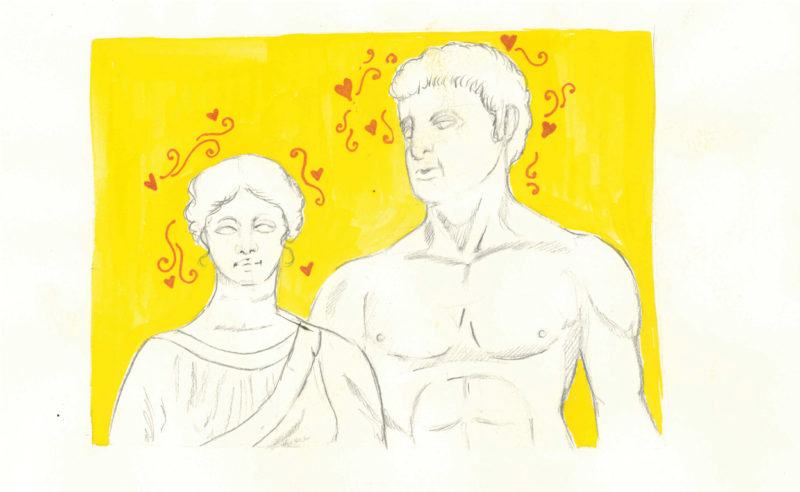Molly Swetnam-Burland, associate professor of classical studies at the College of William and Mary, closed out the 2017 Lennox Seminar lecture series on Nov. 27 with “After Actium: Embracing Egypt in Augustan Rome and Beyond.”
Swetnam-Burland’s presentation focused on Egyptian artifacts found in Augustan Rome. While Augustus and his army conquered Egypt in 31 B.C., the Romans were fascinated by Egyptian culture and art. Swetnam-Burland argued that instead of viewing the artifacts in a political light, they could be best understood in an economic and aesthetic context.
Egyptian art has long been understood as part of a Roman campaign to legitimize Augustus defeating the Egyptians in conquest. Scholarly attention has been focused on what is known as ‘Black Room,’ a room in the “mysterious” villa at Boscotrecase. This villa has many rooms decorated with artwork, and it was theorized to have belonged to Augustus’ family. While most of the art on the walls has eroded over time, tiles depicting two Egyptians still remain.
Swetnam-Burland explained that scholars used to think that these tiles showed members of the Augustan royal family dressing in Egyptian garb, but this theory has since been shown to be unfounded. Now, most scholars believe that the the large house containing rooms such as the Black Room were owned by traders. The Black Room, far from being a place for elites to socialize, may have actually been a storehouse for goods.
Egyptian sculptures and visual art flourished as trading routes expanded under Augustan rule. Romans and other Eurasian peoples enjoyed objects such as ceremonial vases and urns which were decorated in Egyptian visual styles. These objects were often inlaid with precious stones.
However, contemporary second-century audiences did more than just ‘copy’ pre-existing Egyptian artwork — they made it their own. Swetnam-Burland spoke about how the proliferation of Italian cameographs from this time period shows how artists often manipulated and experimented with Egyptian aesthetics. The Italian cameographs were clearly different from their Egyptian predecessors, while still drawing inspiration from Egyptian artworks.
While the Romans enjoyed Egyptian visual aesthetics, their appreciation was ethically ambiguous. Roman approximations of Egyptian art were more greatly desired than Egyptian art itself, which shows a lack of appreciation of their host culture for its own sake. In a period where cultural appropriation is still a relevant topic, I noticed the contradictions in how the Romans treated the Egyptian people versus how they treated Egyptian art. While the Romans enjoyed Egyptian art styles, Swetnam-Burland noted that they created paintings of Egyptians that portrayed them as helpless and “uncivilized.” These paintings have political connotations; by portraying Egyptians as weak; the Romans could justify their conquest of Egypt.
“I think what’s important about the Lennox seminar is that it enables your college community to get the absolute authority on whatever the topic is, but also that it really puts all disciplines on the same playing field. So it’s not like classics is better or worse than English,” Swetnam-Burland said. “It kind of gives all academic disciplines this incredibly rare and amazing opportunity to learn from world experts, and hopefully her from engaging, fun speakers. I wish my college had this. I think it’s amazing.”







